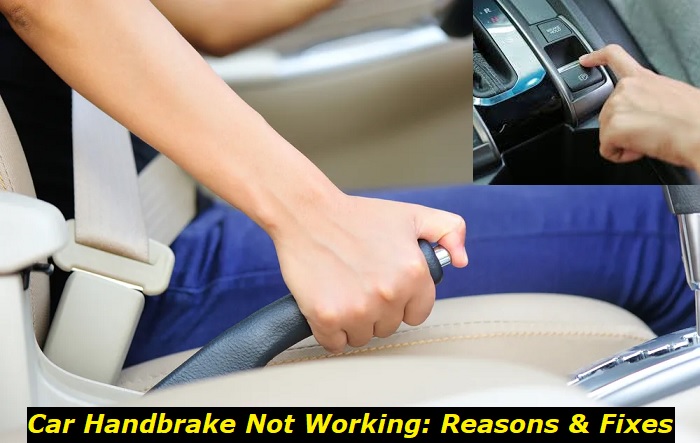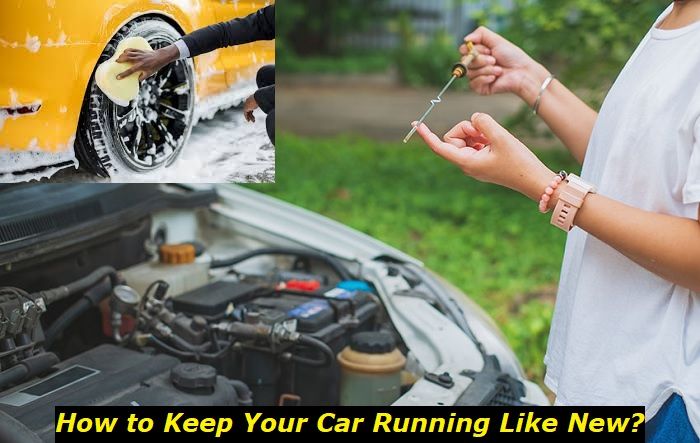It is both dangerous and troublesome to drive with a faulty handbrake. Fortunately, the vast majority of car handbrake issues can be swiftly identified and repaired without having to pay a fortune for that. Don't let your car handbrake put the brakes on getting back out on the road! In this article, we'll discuss five typical reasons why it may not be performing correctly and how to resolve them yourself.
Parking brake problems highlights
- Level of urgency:medium
- DIY diagnostics:possible but complicated
- DIY repairs:impossible
- Price for repair:$100 - $450
- Common symptoms:locked wheels, car rolling
- Commonreasons:EPB problems, rear pads issues, parking brake system problems
- If ignored:no parking brake, rolling back, dangerous situations

How Does a Car Handbrake Work, And Why Do You Need to Keep It in Good Condition?
The car handbrake, otherwise known as the emergency brake or parking brake, is a critical component in any vehicle. It's designed to keep a vehicle from moving when it's parked and isn't engaged by the driver. When you pull up on the handbrake lever, it sends pressure through cables or hydraulic lines that engage the brakes at each wheel, locking them up to prevent your car from rolling away.
It's important to keep the handbrake in good condition and make sure it is always fully engaged when parking your vehicle. The handbrake should be checked regularly for any signs of wear or damage and adjusted if necessary. If the handbrake isn't working properly, it can cause the brakes to drag and lead to excessive wear, leading to higher maintenance costs. It's also important for safety reasons; a car that isn't braked securely can roll away and cause an accident if it rolls into traffic.
Finally, the handbrake is critical for inclines or hills. If you're parked on a hill, the brakes need to be able to hold the car securely in place. A malfunctioning handbrake may not provide enough gripping power for the car to stay put, leading to an unsafe situation. By taking care of your handbrake and making sure it's in good working condition, you can keep yourself and other drivers safe while ensuring that your car remains reliable and in good condition.
What Are The 5 Common Reasons For Handbrakes Not Working?
The handbrake is an important safety feature on your car, and if it isn't working properly, you may be at risk of getting into an accident. There are several different reasons why a handbrake might not be functioning correctly, so it's important to identify the cause before attempting to remedy the problem.
Here are the five most common reasons why handbrakes may not be operating correctly:
- Lack of Lubrication
When the handbrake cable is not regularly lubricated, it can cause the brake to become stuck in the on position and not release when released. This can be easily remedied by lubricating with a light oil such as WD-40.
- Sticking Pistons
In cars with drum brakes, the pistons in the brake cylinders can become stuck due to rust and debris. This will prevent the brake from releasing when it is supposed to. To fix this issue, the cylinders need to be removed and cleaned with a wire brush or replaced altogether.
- Broken Cable
If the handbrake cable is broken or damaged, the brake will not be able to release when pulled. In order to fix this issue, the cable needs to be replaced entirely or repaired if possible.
- Broken Lever
If the handbrake lever is broken or damaged, it can prevent the brake from releasing when it should. This requires a new lever to be fitted or the old one repaired.
- Worn Pads
If there is not enough friction on the brake pads due to excessive wear, it can cause the handbrake to be ineffective. This requires new brake pads to be fitted or replaced if necessary.
It is important to identify and address any of these common reasons for the handbrake not working as soon as possible in order to ensure your safety on the road. If you have any doubts or questions, it is always best to refer to a qualified professional for advice.
Potential Weather-Related Issues With The Handbrake
Weather can be a factor when it comes to the handbrake. In cold temperatures, the liquid in the brake system can freeze and cause components to malfunction or fail. This is especially true if any water has found its way into the brakes due to condensation. In addition, dirt and debris that accumulates over time can become stuck in the brake pads, making them less effective.
In hot temperatures, the liquid in the brakes can become very hot and cause components to fail or malfunction due to excessive heat. This is particularly true for cars that are driven in stop-and-go traffic or used for heavy loads. Furthermore, materials such as plastics and rubber components can become brittle, leading to the premature failure of parts.
In wet weather, water and dirt can accumulate in the brake system, making it less effective. In addition, water can cause rust and corrosion on metal components, leading to their eventual failure. It is important to inspect your brakes regularly for any signs of wear or damage due to weather.
How To Prevent Handbrakes From Failing?
Here are some tips to help prevent handbrakes from failing:
- Regular Maintenance
To keep your handbrake working properly and prevent failure, it's important to perform regular maintenance. Check the cable periodically for wear and tear, replace it if necessary, lubricate all moving parts to keep them in good condition, and make sure that the brake discs and pads are in good shape.
- Follow Manufacturer's Guidelines
Make sure to follow all manufacturer guidelines when using the handbrake. You should also read the user manual that comes with your vehicle and understand its proper operation before using it.
- Proper Use
Make sure to use the handbrake correctly. Applying too much pressure while engaging the parking brake or using it excessively can cause wear and tear on the brake components, leading to decreased performance and increased risk of failure.
- Avoid Overheating
Too much heat can cause the brake parts to expand, which can cause them to fail. To prevent this from happening, make sure to allow the brakes to cool down after each use and avoid using the handbrake for extended periods of time.
- Replace Damaged Components
If you notice any signs of damage or wear and tear, be sure to replace the affected components as soon as possible to prevent further damage and prevent the handbrake from failing.
Tips On How To Use Handbrakes Properly
- Push the handbrake lever down firmly until it engages, and you can feel a slight resistance. This will ensure your brakes are in their correct position.
- Check that the parking brake is engaged by trying to push the car forward - if it doesn't move, then the brake is successfully engaged.
- Before releasing the handbrake, make sure that the car is in neutral or park mode, and also double-check that your car is securely parked.
- When releasing the handbrake, make sure to do it slowly and steadily to ensure a smooth release.
- Don't forget to check that the parking brake is disengaged when starting your car - this will prevent it from stalling or lurching forward unexpectedly.
Bottom Line
Handbrakes are an essential safety feature on any vehicle, and it's important to ensure that they are working properly. If you have noticed any signs of damage or wear and tear, make sure to replace the affected components as soon as possible to prevent further damage and failure. Regular maintenance can also help keep your brake in top condition and prevent failure.
Additionally, make sure to use the handbrake correctly and follow all manufacturer guidelines for proper operation. With these tips in mind, you can help keep your car safe and ensure your brakes are working properly at all times.
About the authors
The CarAraC research team is composed of seasoned auto mechanics and automotive industry professionals, including individuals with advanced degrees and certifications in their field. Our team members boast prestigious credentials, reflecting their extensive knowledge and skills. These qualifications include: IMI: Institute of the Motor Industry, ASE-Certified Master Automobile Technicians; Coventry University, Graduate of MA in Automotive Journalism; Politecnico di Torino, Italy, MS Automotive Engineering; Ss. Cyril and Methodius University in Skopje, Mechanical University in Skopje; TOC Automotive College; DHA Suffa University, Department of Mechanical Engineering






Add comment